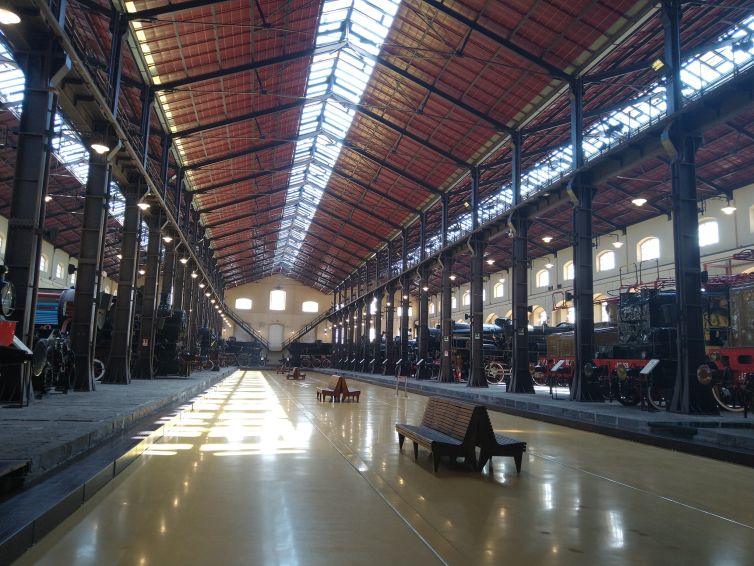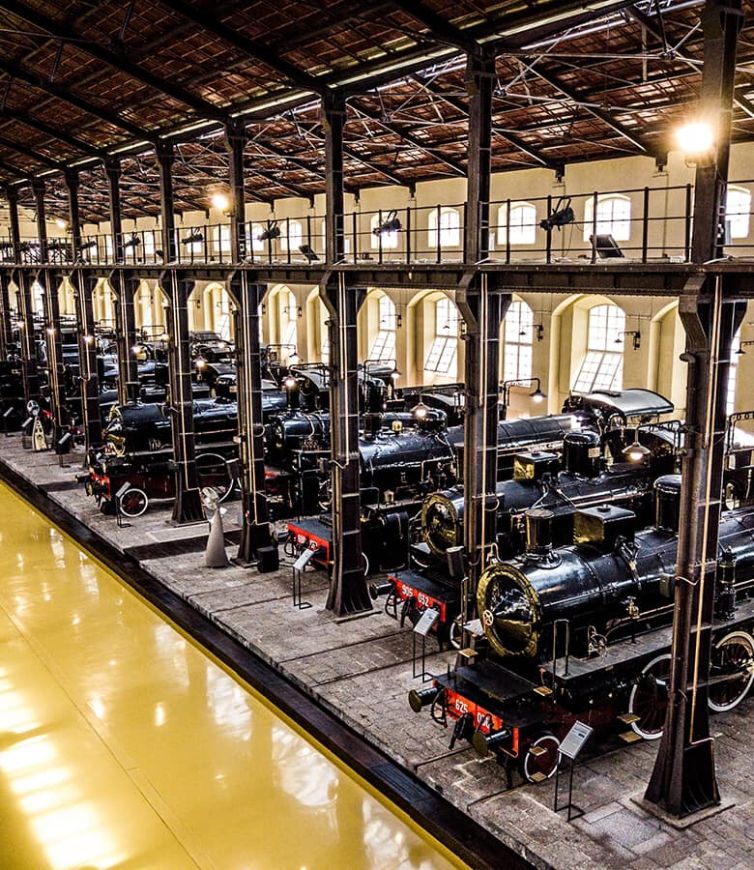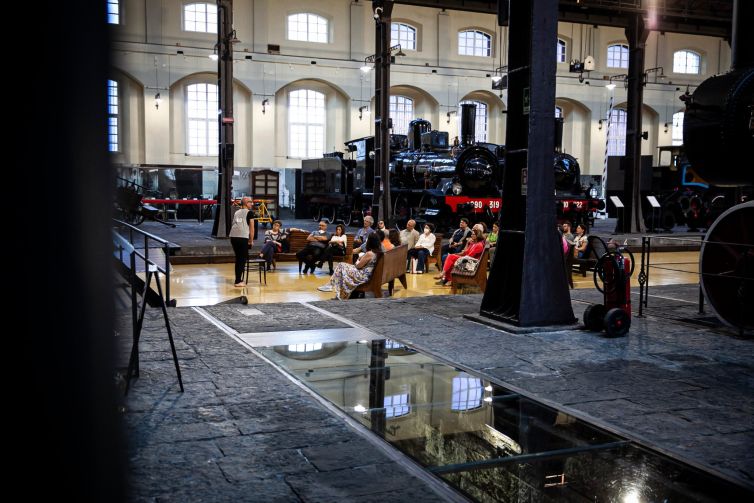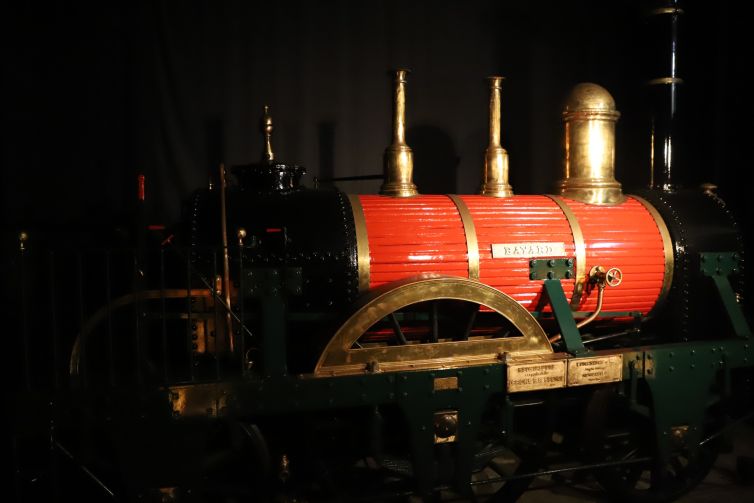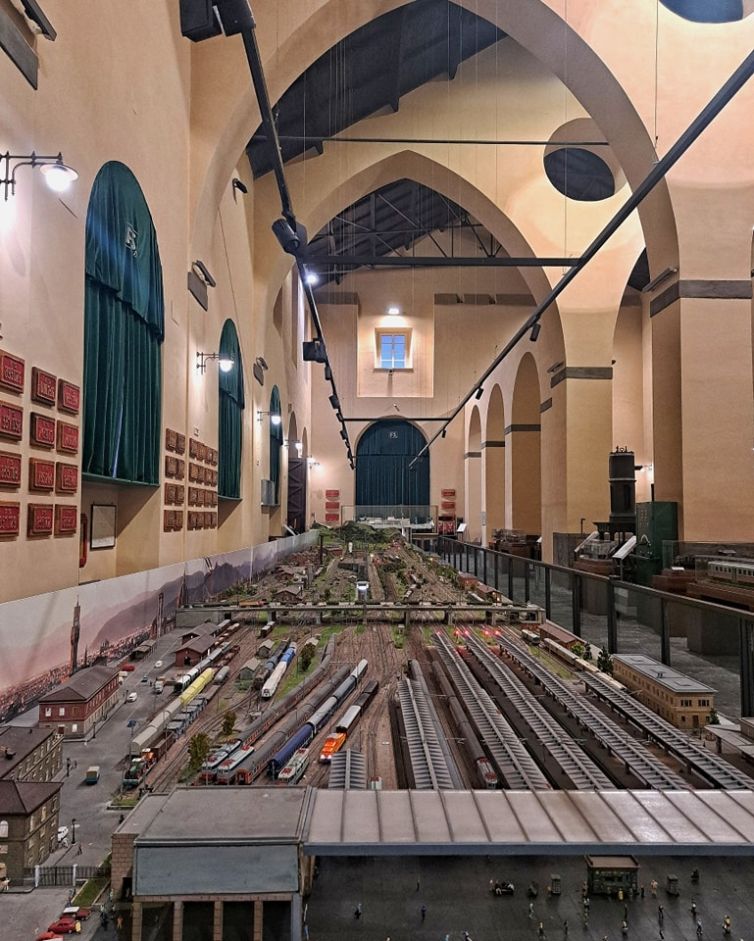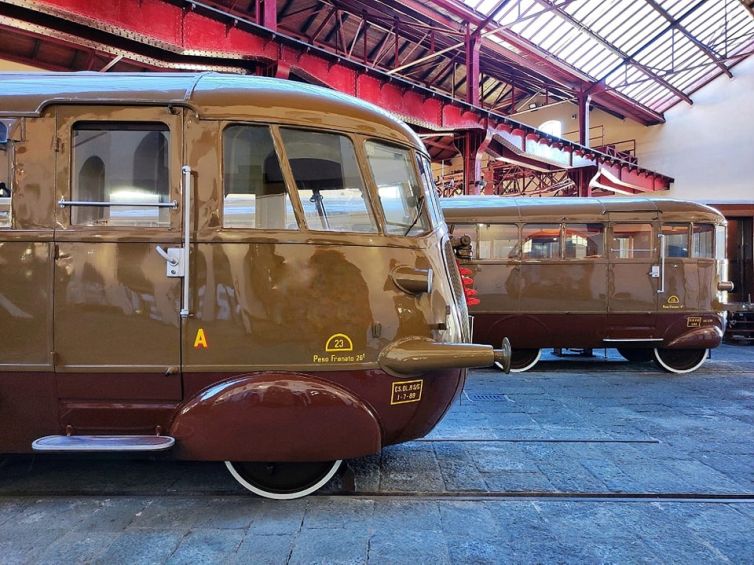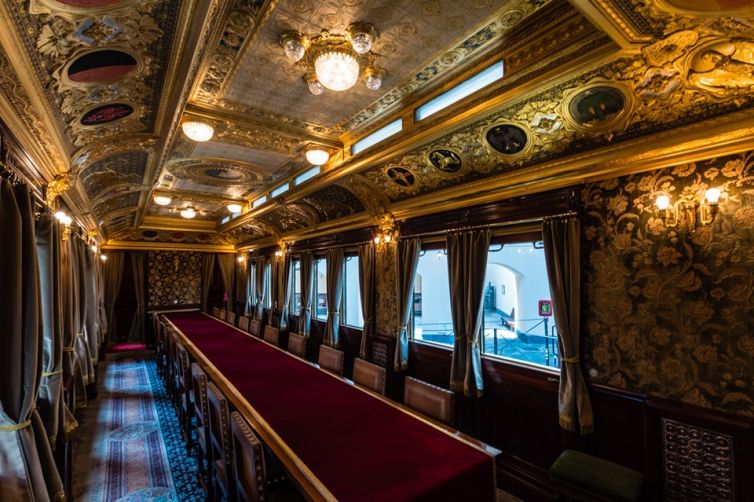Pietrarsa’s Railway Museum
Nestled on the picturesque shores of the Gulf of Naples, the Pietrarsa Museum stands as a testament to Italy’s illustrious railway history. This unique museum, located in the serene backdrop of the former Bourbon workshop, offers a captivating journey through the evolution of rail transport in Italy. It’s not just a museum; it’s a historical voyage that traces the roots of Italian railways, making it an unmissable destination for both history buffs and casual visitors alike.
At Pietrarsa, visitors step into a world where history and innovation intersect. The museum is housed in the very site where the first Italian steam locomotive, “Bayard,” chugged into history, marking the beginning of the railway era in the country. Today, this museum not only celebrates the technological advancements in rail transport but also preserves the memory of Italy’s industrial heritage. Whether you’re marvelling at the grandeur of vintage locomotives or exploring the interactive exhibits, a visit to Pietrarsa is a journey back in time to where Italy’s modern transportation legacy began.
The Historical Significance of Pietrarsa
The Pietrarsa Museum is a captivating symbol of the Kingdom of the Two Sicilies’ industrial and technological prowess, particularly in the realm of railway innovation. Located in the kingdom’s vibrant capital, Naples, the museum stands on a site rich in historical significance, once home to the Royal Bourbon Factory of Pietrarsa. This area played a pivotal role in the industrial achievements of the Kingdom of the Two Sicilies, especially in the development of the railway system.
The Pietrarsa Museum is a captivating symbol of the Kingdom of the Two Sicilies’ industrial and technological prowess, particularly in the realm of railway innovation. Located in the kingdom’s vibrant capital, Naples, the museum stands on a site rich in historical significance, once home to the Royal Bourbon Factory of Pietrarsa. This area played a pivotal role in the industrial achievements of the Kingdom of the Two Sicilies, especially in the development of the railway system.
Center of Technological Innovation in the Kingdom
In the 19th century, the Kingdom of the Two Sicilies was at the forefront of industrial and technological advancement in Southern Italy. The Royal Bourbon Factory, established in 1840 by King Ferdinand II of Bourbon, was a beacon of progress. It was dedicated to producing steam machines, iron castings, and notably, railway locomotives. It was here, in this innovative hub, that the “Bayard,” the first steam locomotive of the kingdom, was built. This pioneering creation marked the beginning of the Naples-Portici railway in 1839, the first railway line in the Kingdom of the Two Sicilies.
From Industrial Site to Historical Museum
Following its period as an industrial powerhouse, the Pietrarsa site underwent a significant transformation. In 1989, it was reborn as a museum, with a mission to preserve and exhibit the remarkable railway heritage of the Kingdom of the Two Sicilies. Spread across seven pavilions and covering 36,000 square meters, the museum is a treasure trove of historical artifacts, each representing a chapter of innovation and national pride within the kingdom.
A Journey through the Kingdom’s Railway History
As visitors walk through the museum, they embark on a journey through the railway history of the Kingdom of the Two Sicilies. The exhibits showcase a progression from the early steam locomotives to the advanced electric trains, reflecting the technological strides made in the kingdom. Each piece in the museum is a testament to the engineering feats and the visionary spirit of the era.
The Pietrarsa Museum is more than a collection of trains; it’s a narrative of a kingdom’s journey towards modernization. It highlights the technological breakthroughs and the societal transformations brought about by the railway system. The museum is a place where the kingdom’s past is palpable, and its legacy is celebrated.
This educational and historical experience offers insights into both the technical intricacies of railway machinery and the broader context of these developments within the Kingdom of the Two Sicilies. It stands as a tribute to the ingenuity and ambition that drove the kingdom’s progress in the industrial age.
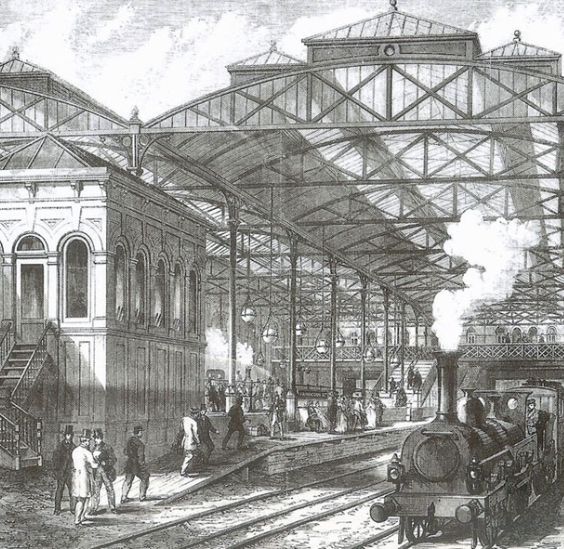
The Museum’s Collection
The Pietrarsa Museum’s collection is a remarkable showcase of the Kingdom of the Two Sicilies’ railway history, offering a rare glimpse into the past through its impressive array of locomotives and carriages. This collection is not only significant for its historical value but also for the story it tells about the kingdom’s technological advancements and cultural heritage.
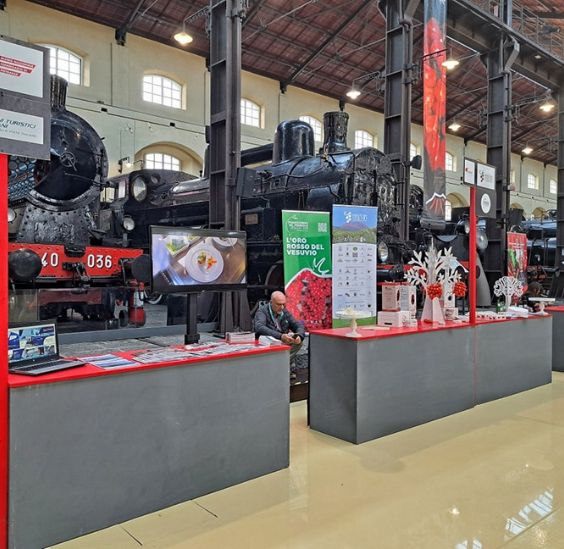
A Glimpse into the Past
The museum’s collection is like a time capsule, containing some of the earliest and most significant railway artifacts from the Kingdom of the Two Sicilies. Among these treasures are various steam locomotives that once traversed the kingdom’s landscapes, including the famed “Bayard.” This locomotive holds a special place in the museum as the symbol of the beginning of railway transportation in the kingdom and a masterpiece of early industrial engineering.
Unique Exhibits
One of the highlights of the museum’s collection is the diversity of the exhibits. Visitors can marvel at the elegant royal carriages, which offer a glimpse into the luxurious travel of the kingdom’s elite. These beautifully crafted carriages, with their opulent interiors and intricate design, are a testament to the craftsmanship and aesthetic sensibilities of the era.
In addition to the locomotives and carriages, the museum also houses a range of other railway-related artifacts, including historical documents, photographs, and equipment. These exhibits provide a comprehensive understanding of the railway system’s impact on the Kingdom of the Two Sicilies, from technological innovation to societal changes.
Preservation of Railway Heritage
The Pietrarsa Museum plays a crucial role in preserving the railway heritage of the Kingdom of the Two Sicilies. Through meticulous restoration and conservation efforts, the museum ensures that these historical artifacts are preserved for future generations. This commitment to preservation is not just about maintaining the physical objects; it’s about keeping alive the memories and stories associated with the kingdom’s railway history.
Visiting the museum’s collection is an immersive experience that transports visitors back to a bygone era. It’s an opportunity to understand the significance of railways in shaping the Kingdom of the Two Sicilies’ history and identity. The collection is a tribute to the ingenuity, craftsmanship, and vision that propelled the kingdom into the modern industrial age.
Visitor Experience at Pietrarsa
A visit to the Pietrarsa Museum is not just about viewing historical artifacts; it’s an immersive experience that engages visitors in the rich railway history of the Kingdom of the Two Sicilies. From the moment you step into the museum, you are transported into a world where history, technology, and artistry blend seamlessly.
Museum Layout and Visitor Path
The museum’s layout is thoughtfully designed to guide visitors through a chronological journey of railway history. The seven pavilions, each focusing on different aspects of the railway legacy, are laid out in a way that allows for a natural and intuitive exploration. As you move from one pavilion to another, you’ll notice how the narrative of the Kingdom of the Two Sicilies’ railway development unfolds, from the early steam engines to the more modern locomotives.
Special Attractions
One of the museum’s special attractions is its interactive exhibits, which include a virtual reality experience. This cutting-edge feature allows visitors to immerse themselves in a simulated environment, experiencing what it was like to travel on a historic train through the Kingdom of the Two Sicilies. It’s an educational and entertaining way to connect with history, making the museum visit memorable, especially for younger audiences.
In addition to the VR experience, the museum often hosts special events, workshops, and temporary exhibitions. These activities are designed to engage visitors of all ages, making each visit unique and enriching.
Practical Information for Visitors
The Pietrarsa Museum is accessible and visitor-friendly. It’s open to the public on most days, except for certain holidays, with reasonable entry fees and discounts for various categories of visitors, such as students and seniors. The museum also offers guided tours, which can provide a more in-depth understanding of the exhibits and the history they represent.
Located just outside Naples, the museum is easily reachable by public transport, including trains and buses. There’s also ample parking for those who prefer to drive. The museum’s website provides detailed information on visiting hours, ticket prices, and how to get there, making it convenient for tourists and locals alike to plan their visit.
In conclusion, a visit to the Pietrarsa Museum is not only a journey through the rich railway heritage of the Kingdom of the Two Sicilies but also an engaging and interactive experience. It’s a must-visit destination for anyone interested in history, technology, or just looking for a unique day out in Naples.

Address
Hours
Wednesday: By appointment only
Thursday: 2:00 PM to 8:00 PM
Friday: 9:00 AM to 4:30 PM
Saturday, Sunday, and holidays: 9:30 AM to 7:30 PM
Tickets
Self-Guided Visit: € 9 Full | € 6 Reduced
Guided Tour: € 11 Full | € 8 Reduced
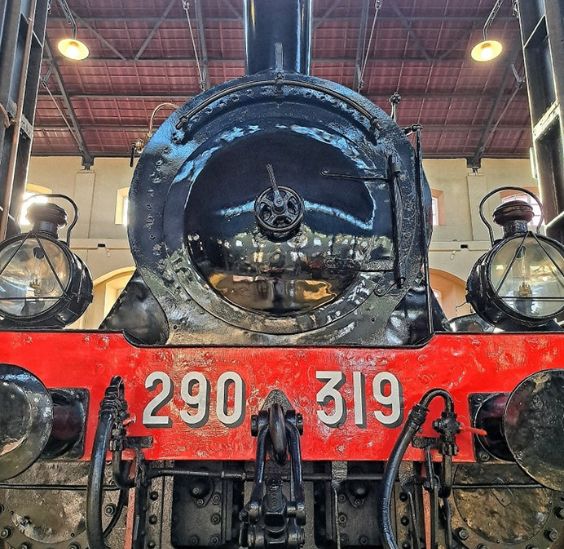
The Pietrarsa Museum is not just a repository of trains and railway artifacts; it’s a vibrant testament to the rich railway heritage of the Kingdom of the Two Sicilies. Each exhibit, from the majestic steam locomotives to the detailed historical documents, tells a story of innovation, ambition, and the transformative power of the railway system. The museum stands as a proud reminder of the role that the Kingdom of the Two Sicilies played in pioneering railway transportation in Italy.
Visitors to the Pietrarsa Museum are offered a unique opportunity to step back in time and explore an era where steam power was revolutionizing travel and industry. The museum’s immersive experiences, like the virtual reality simulations, bring history to life in a way that is both educational and engaging. It’s a destination that appeals to a wide range of visitors – from history enthusiasts and technology buffs to families looking for an intriguing and informative outing.
Moreover, the museum’s commitment to preserving and presenting the railway heritage of the Kingdom of the Two Sicilies is commendable. It’s an important cultural resource that not only educates but also inspires a sense of pride and wonder in the kingdom’s historical achievements. For anyone visiting Naples, the Pietrarsa Museum is a must-see attraction, offering insights into a pivotal chapter in the region’s history and an experience that resonates long after the visit.


